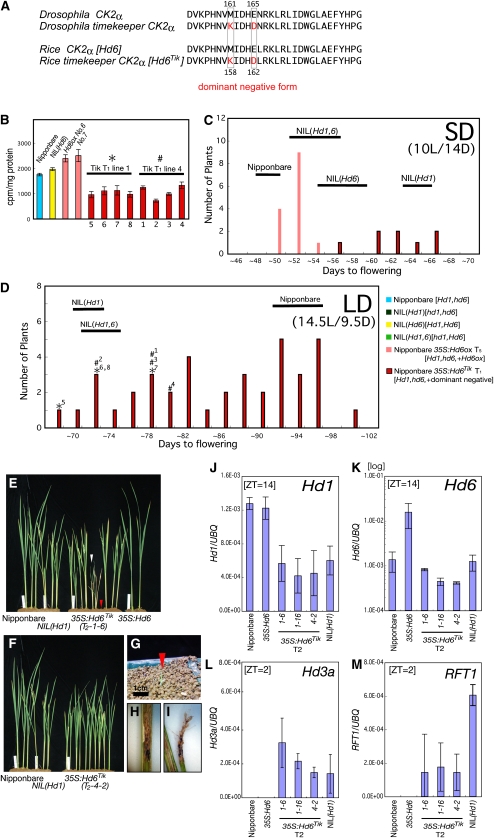Figure 3.
Phenotypes of rice overexpressing a dominant-negative CK2α allele. A, The sequence on top shows the Tik mutation in a dominant-negative form of CK2α, with mutations of M158K and E162D sites in Hd6, referred from the Tik allele of Drosophila melanogaster (in red). B, CK2 activity in plant extracts. Data are means of three experiments for each line using distinct tillers after flowering. C and D, Flowering times in Nipponbare, NIL(Hd1), NIL(Hd6), NIL(Hd1,6), Hd6ox, and Hd6Tikox were examined. T1 plants were grown under SD (10 h of light/14 h of dark) and LD (14.5 h of light/9.5 h of dark) conditions. Histograms for days to flowering are shown. Rice plants of NIL(Hd6) and Hd6ox did not flower within 100 d after sowing under LD conditions. Black bars indicate ranges of flowering time for the tested lines (i.e. that all tested plants flowered within these ranges). E to I, Nipponbare, NIL(Hd1), Hd6Tikox, and Hd6ox plants under LD conditions 70 d after sowing. All tillers were removed. Most of the surviving Hd6Tikox T1 plants exhibited normal growth (E and F), but a few plants showed abnormal phenotypes (e.g. arrowhead in E). G, Hd6Tikox plants (red arrowhead) 30 d after sowing. H and I, Retarded panicles in Hd6Tikox plants. J to M, Gene expression in Hd6Tik lines.

